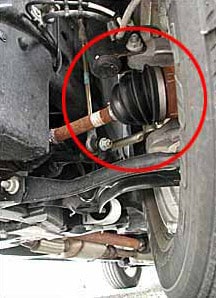

New Axle Replacement/repair |San Jose, CA
here at akin’s auto repair we offer new cv axle replacement. if you have a problem with your vehicle suspension such as clicking symptoms under acceleration. this might be cause by your cv axles.we also offer suspension repairs such as shocks, struts, strut mounts, control arms, sway-bar links, bushings, compliant bushings, axle seals, inner and outer tie rod ends. trust akin’s auto repair for your next service with our expert technicians.
We offer service and repair for most manufacturers.
CV-Axle repairs/replacement can cost you anywhere from $230 to $900 or more. It depends primarily on the kind of car you have,
Acura, Audi, BMW, Buick, Cadillac, Chevrolet, Chrysler, Dodge, Ford, GMC, Honda, Hyundai, Infiniti, Jeep, Kia, Lexus, Lincoln, Mazda, Mercedes-Benz, Mercury, Nissan, Oldsmobile, Pontiac, Scion, Subaru, Toyota, Volkswagen
Drive Train Axle
Trust Akins Auto Repair with your next auto axle replacement service. Contact us in San Jose
The drivetrain is a system of components—the engine, transmission, drive shafts, geared differentials, and drive axles—working together to generate power and deliver it to the wheels.
If you’ve read the engine overview, then you know how a car gets its power. But how does it transfer that power to the asphalt and move you down the road? Through the drivetrain.
You might encounter other words like “powertrain” and “driveline.” Powertrain refers only to the engine and transmission. Driveline refers to everything but the engine and transmission.
Although every car has an engine, not all cars put power to the pavement in the same way. There are four ways power can be transmitted.
- Front-Wheel Drive
The drivetrain sits over the front wheels. The transmission and differential are integrated into the transaxle, which is positioned below the engine. Power flows from the engine through the transaxle and to the drive axles, which connect to the front wheels. - Rear-Wheel Drive
The engine sends power to the transmission, which is connected to the driveshaft. The driveshaft is connected to a rear differential, which divides the power between the two drive axles connected to the rear wheels. - All-Wheel Drive (AWD)
Modern AWD vehicles are highly sophisticated. They send power to all four wheels through computer-controlled traction systems. However, they lack a transfer case for low-range gearing, as do 4WD vehicles. Some AWD systems don’t work full-time—the system turns on only when one of the two axles loses traction. - 4-Wheel Drive (4WD)
There are two kinds of 4WD: full-time and part-time. Full-time 4WD has power at all wheels all the time. A differential inside the transfer case allows for smooth power distribution. Part-time 4WD allows either two-wheel drive or 4WD. But because there’s no differential in the transfer case, only 2WD should be used in dry, nonslippery conditions.
Depending on the drive system, several kinds of drivelines can be used. Rear-wheel and 4WD systems often use driveshafts, which are long, semi-hollow steel tubes with universal joints on either end to enable flexibility. Front-wheel drive and AWD vehicles use solid-steel drive axles with constant velocity (CV) joints on either end. CV joints are highly flexible and help connect the transaxle to the wheel. CV joints have big rubber boots that contain copious amounts of grease, so they are easily identifiable.
The transmission sends power from the engine to the rest of the driveline using a complex set of gears. The transmission allows the vehicle to move from a standing start to more than 100 MPH while keeping engine RPMs within a fixed range. The transmission also enables both forward and reverse motion without affecting the engine. Transmissions have evolved a lot over the years, and today there are three general types:
Automatic Transmissions automatically select the ideal gear based on accelerator pedal position, vehicle speed, engine speed, and road conditions. Power from the engine is transmitted through a torque converter, then to the internal gears that shift automatically using hydraulic pressure from the transmission fluid. Automatic transmissions began with just two gears, but now there are as many as eight speeds.
Manual Transmissions give the driver full shifting control. To change gears, the driver presses a clutch pedal, which disengages the engine from the rest of the drivetrain, and then uses a shifter to change gears. Depressing the clutch pedal generates hydraulic pressure in the clutch master cylinder, which applies the pressure to the clutch slave cylinder and disengages the clutch. A clutch cable performs the same function in older cars. The clutch assembly consists of a clutch disc, a clutch pressure plate, and a clutch release bearing. Since the 1960s, manual transmissions have grown from three to six speeds.
Semi-Automatic Transmissions are relatively new hybrid transmissions that combine the driver control of manuals with the driving ease of automatics. Although some semi-automatics use a torque converter with electronic manual shifting buttons, more advanced semi-automatics—from makers such as Audi and Volkswagen—use a clutch disc system for quicker, crisp-performance shifting.







